If you’re seeking a place where breathtaking landscapes meet rich history, look no further than Montana.
In this article, you’ll embark on a journey through the wonders of the Treasure State, discovering what makes it truly unique.
Imagine standing in awe at the towering majesty of Yellowstone National Park or Glacier National Park, where pristine mountain ranges come alive with roaming wildlife.
And don’t forget about the state’s rich mining history, where the legacy of the state’s past is etched into the very fabric of its present.
Whether you’re an outdoor enthusiast, a history buff, or simply someone yearning for adventure, Montana has something special to offer.
Together, let’s unravel the mysteries and discover what truly makes the state a land like no other.
What Makes Montana Unique?
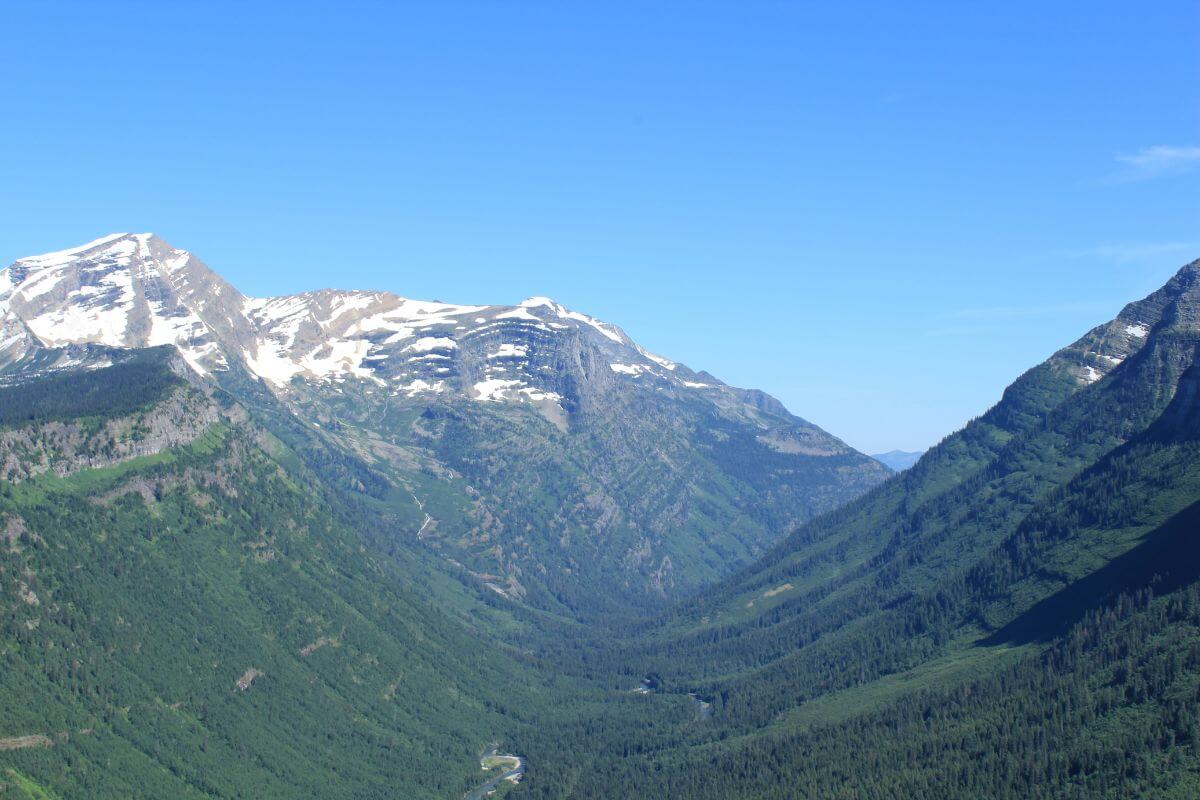
From its spectacular Yellowstone and Glacier National Parks to its Triple Divide Peak and its close call with history, Montana stands out for many different reasons.
Let’s check them out.
1. Montana’s Triple Divide Peak
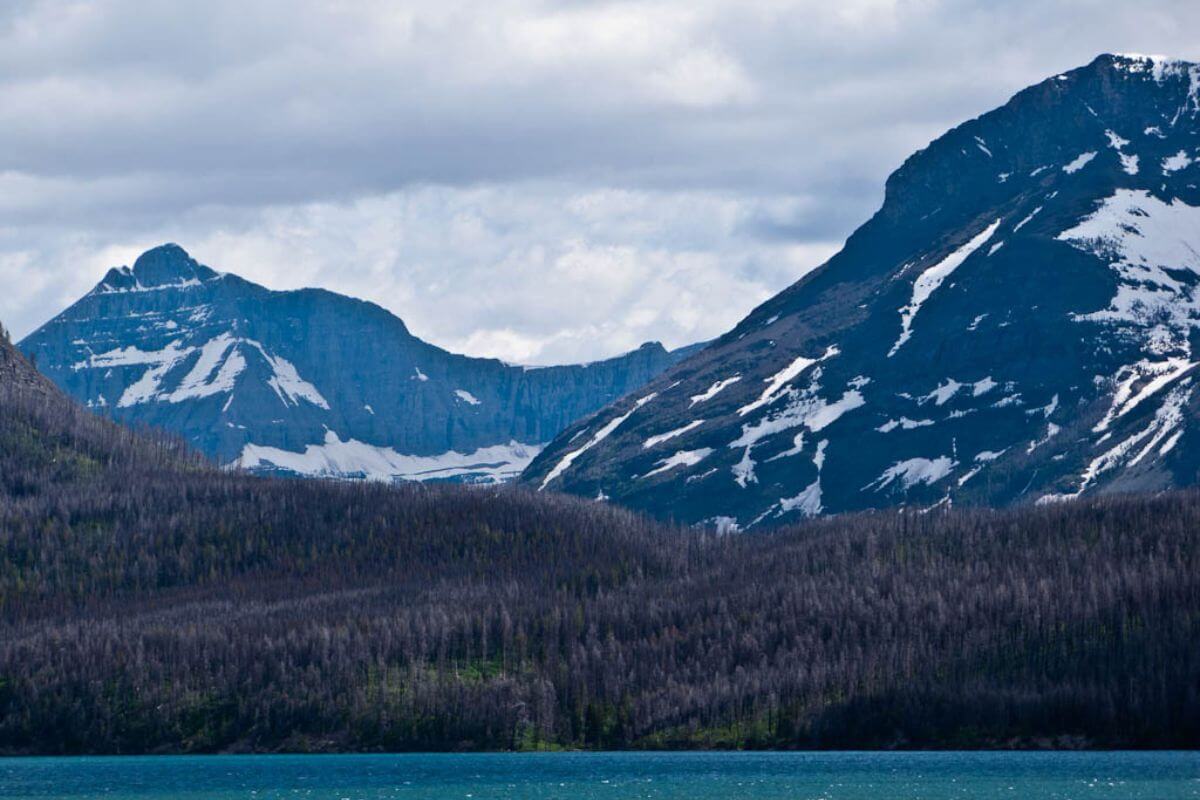
A triple divide or triple watershed is a point where 3 drainage basins meet on the Earth’s surface.
Montana hosts one of North America’s few triple divides, with just 3 such divides in the continental U.S.
Triple Divide Peak in the Lewis Range, a part of the Rocky Mountains, is where the state’s triple divide is found.
A historical context enriches the experience of visiting this area. The Lewis Range, formed around 170 million years ago, was shaped by ancient geological processes.
Precambrian rock faulting and sliding over younger Cretaceous rocks resulted in the captivating landscape we see today.
You can embark on an exciting adventure to reach this divide.
Experienced hikers and backpackers have the option to trek from St. Mary to Red Eagle Lake and then to Triple Divide Pass.
Alternatively, a long day hike from Cut Bank Ranger Station is also possible.
From Montana’s Triple Divide Peak, water flows in 3 directions, reaching the Atlantic Ocean, Pacific Ocean, or Arctic Ocean via Hudson’s Bay.
This triple watershed fosters an abundance of diverse flora and fauna in a region known as the Crown of the Continent.
Standing atop Montana’s Triple Divide Peak is an unforgettable experience, and one that makes the state truly unique.
2. Montana’s The C.M. Russell Museum
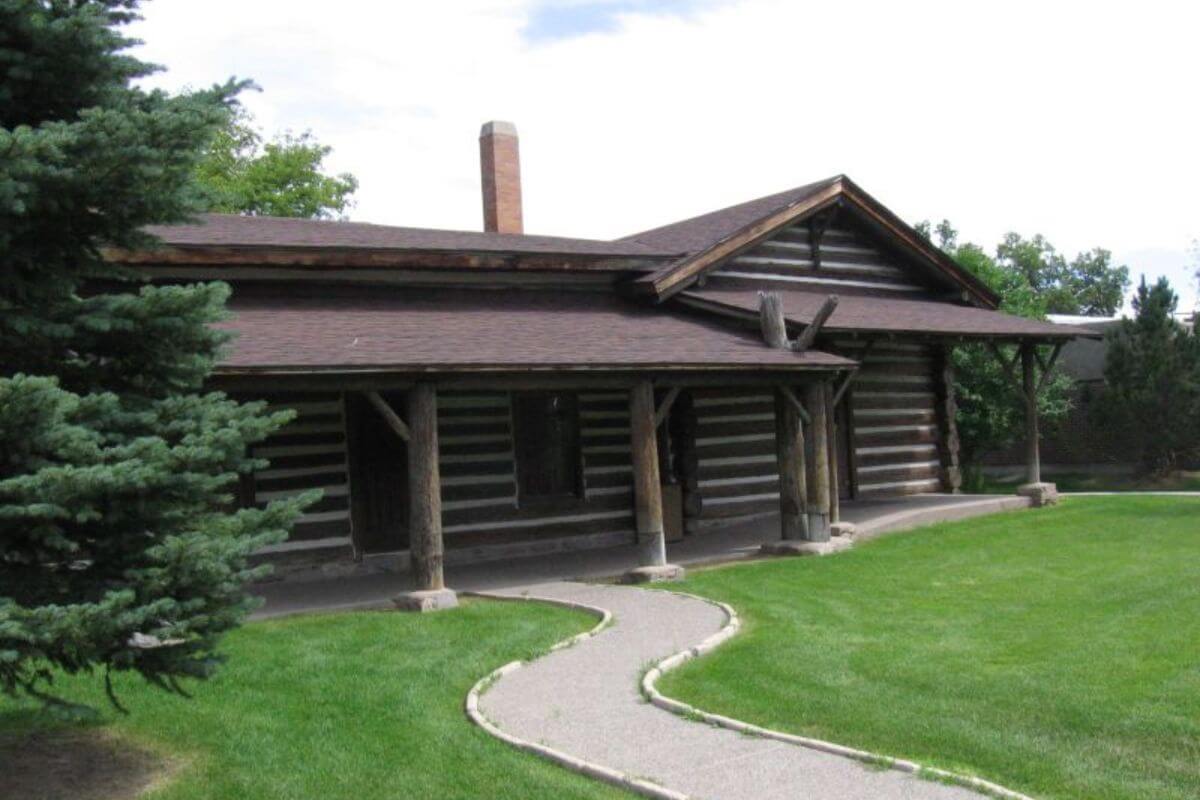
Montana is home to a gem that no history buff or art lover should miss: The C.M. Russell Museum in Great Falls.
This museum pays homage to the incredible work of artist C.M. Russell, a highly influential figure known for capturing the essence of life in the West during the early 20th century.
The C.M. Russell Museum boasts the largest collection of Russell’s watercolor and oil paintings.
As you wander through the museum, you’ll be captivated by his stunning portrayals of Western landscapes, Native American culture, and cowboy life.
The appeal of the museum extends beyond art enthusiasts. Western history enthusiasts will find themselves engrossed in the stories and narratives depicted in Russell’s paintings.
Whether you’re an art aficionado or a lover of American history, the C.M. Russell Museum is a must-visit destination in Montana.
3. Montana’s Berkeley Pit
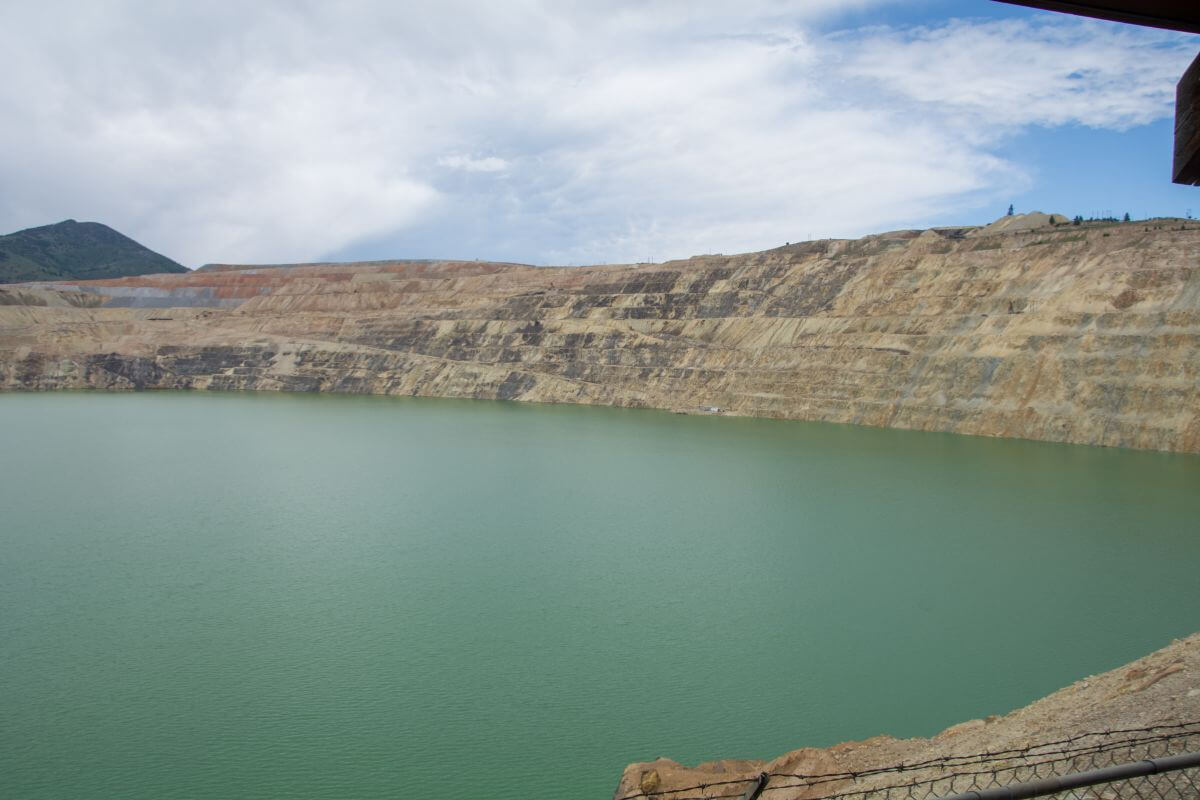
Formerly a bustling open-pit copper mine in Butte, Montana’s Berkeley Pit has gained infamy as the “acid pit of doom.”
In 1955, the pit was operated under the management of the Anaconda Copper Company, which later transitioned to the Atlantic Richfield Company.
When the mine closed in 1982, a series of problems began to emerge.
The water pumps in the nearby Kelly Mine Shafts were turned off, and slowly but surely, groundwater from aquifers started filling the pit.
Since its closure, the water levels in the Berkeley Pit have risen significantly, reaching within 150 feet of the natural groundwater level. This has led to a cascade of environmental challenges.
As minerals decay and oxygen dissolves in the water, acid is released, resulting in highly acidic water with a pH level of 2.5.
The consequences of this acidity became tragically evident when several hundred geese made a regrettable decision to rest on the lake during their migration.
Their unfortunate deaths revealed the devastating impact of the pit’s water – acidic enough to cause severe damage to the intestines of creatures that consumed it.
Despite its dark history, the Berkeley Pit has become one of Montana’s weird wonders and an unexpected tourist attraction.
It serves as a stark reminder of the delicate balance between mankind’s endeavors and the environment, leaving visitors pondering the consequences of our actions.
4. Montana’s Grizzly Bears
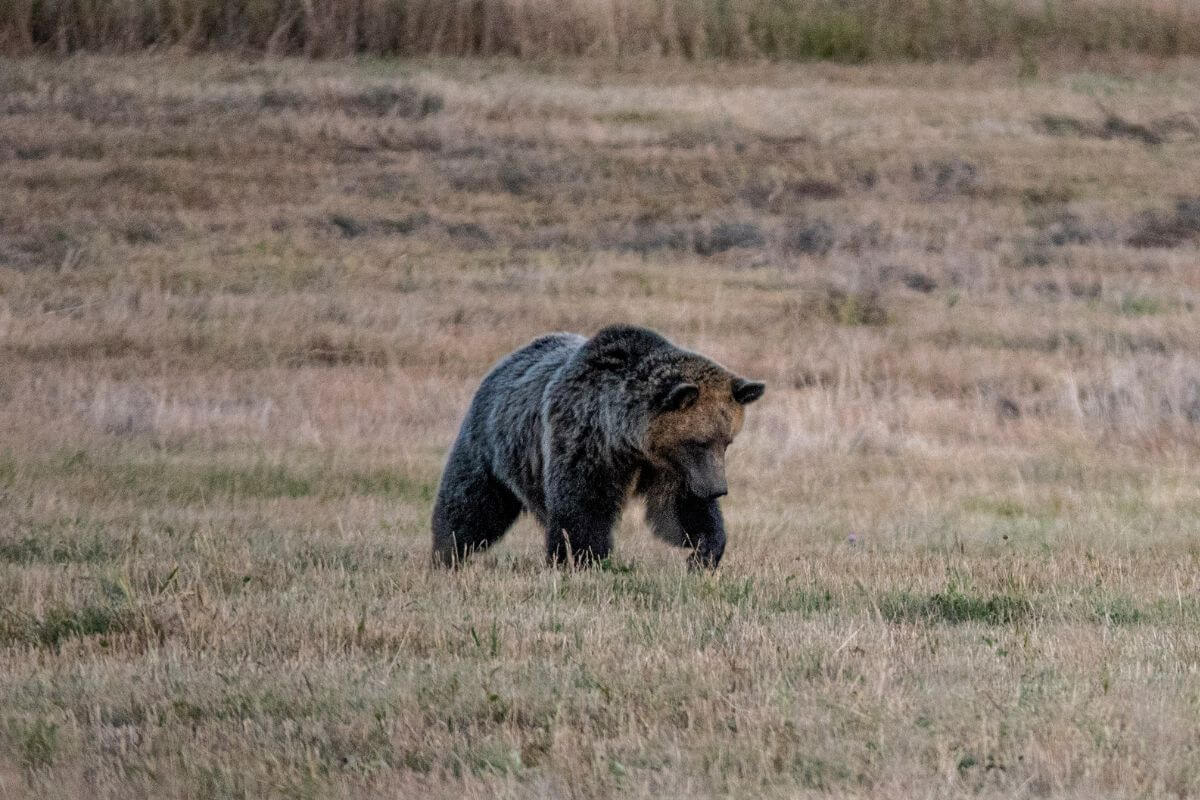
Montana boasts the largest grizzly bear population among all U.S. states except Alaska.
But these iconic animals are facing an uncertain future. Threatened by habitat loss and other factors, grizzly bear populations have been declining in recent years.
It’s a sobering reminder of the fragility of our natural world and the urgent need for conservation efforts.
Grizzly bears are truly remarkable creatures. As omnivores, they have a diverse diet that includes berries, roots, insects, fish, and even small mammals.
They play a crucial role in maintaining the balance of their ecosystems, serving as indicators of overall environmental health.
While grizzly bears can be found in scattered pockets across the contiguous United States, Montana is a key area for their conservation.
In fact, the state is home to an estimated population of between 1,800 and 2,000 bears, reflecting the success of its conservation efforts.
Most grizzly bear sightings in Montana occur in its western part, though there have been occasional sightings in the Far East.
Interestingly, the majority of its permanent grizzly bear residents reside west of Yellowstone County, which happens to be the state’s most populous county.
It’s an incredible privilege to witness these magnificent creatures in their natural habitats, and we hope future generations will have the same opportunity.
5. Montana’s Dinosaur Trail
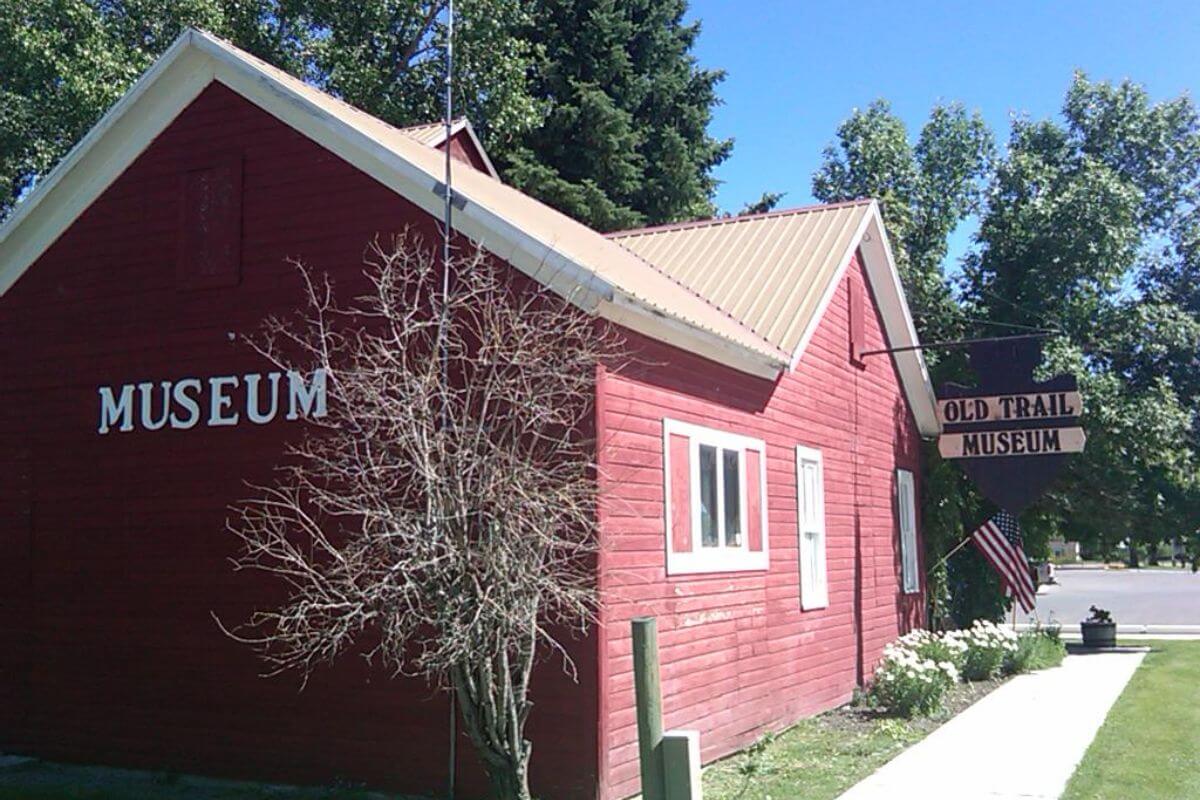
Montana’s Dinosaur Trail features 14 museums, parks, and popular attractions across the state, highlighting discoveries by famous paleontologists.
It attracts over 300,000 curious visitors annually, with the primary purpose of boosting tourism and expanding public knowledge about dinosaurs.
For those planning a trip to explore this captivating trail, here are the 14 stops along Montana’s Dinosaur Trail:
- The Upper Musselshell Museum
- Museum of the Rockies
- Old Trail Museum
- Montana Dinosaur Center
- The Rudyard Depot Museum
- H. Earl Clack Memorial Museum
- Blaine County Museum
- Great Plains Dinosaur Museum
- Phillips County Museum
- Garfield County Museum
- Fort Peck Interpretive Center
- Frontier Gateway Museum
- Makoshika State Park
- Carter County Museum
Embarking on this dinosaur hiking trail is a remarkable experience, offering a unique journey through the state’s prehistoric wonders.
6. Helena, Montana
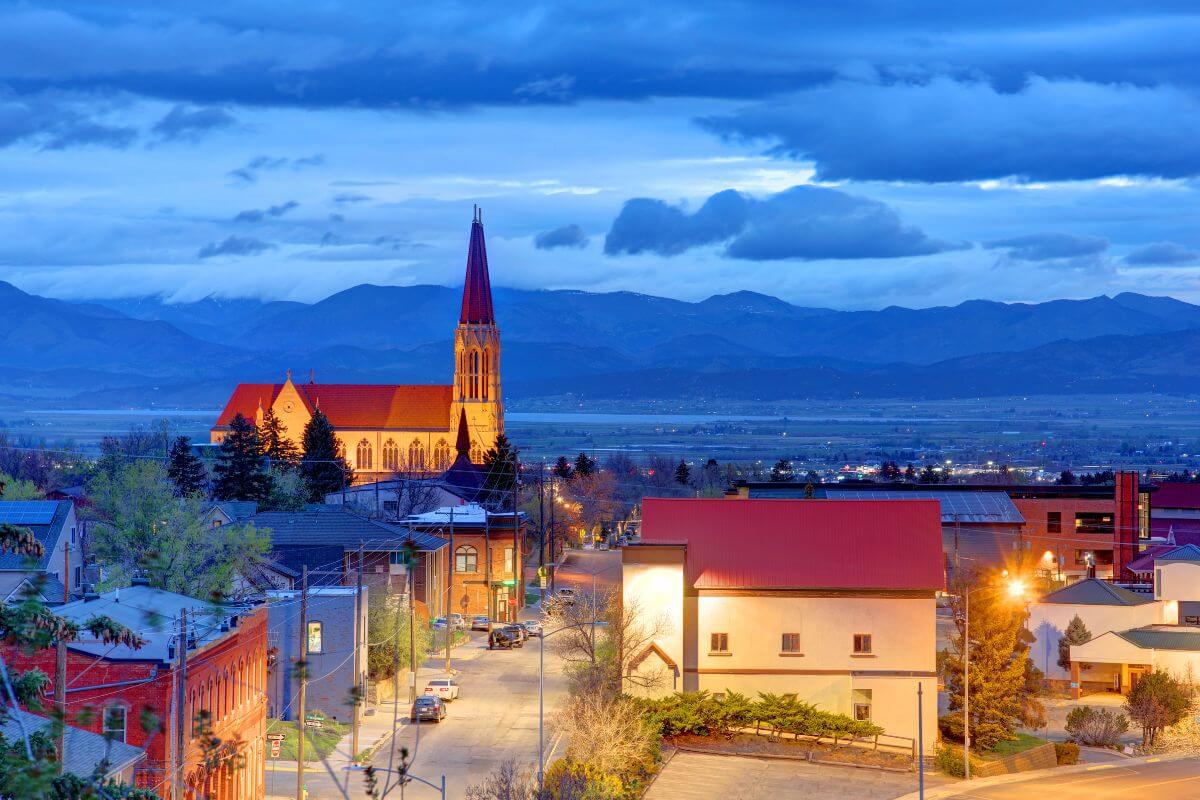
Next, we journey to Montana’s capital city, known for its rich history and breathtaking natural beauty.
At one point in time, Helena had more millionaires per capita than any other place in the world.
It’s a testament to the riches discovered during Montana’s Gold Rush Era when hopeful prospectors flocked to the area in search of fortune.
The city is located at the base of Mount Helena, providing stunning views of the surrounding landscape.
Start your visit to Helena with a trip to the State Capitol building.
It’s not just an architectural marvel with a Greek neoclassical design but also home to captivating artwork, including Charles M. Russell’s depiction of Lewis and Clark meeting the Salish Native Americans.
Next, explore the historic Reeder’s Alley, a charming street originally built to house miners during the Gold Rush Era.
Today, it’s lined with unique shops and restaurants, offering a taste of local flavor and a glimpse into the city’s past.
For art enthusiasts, the Holter Museum is a must-visit.
This cultural gem showcases regional, national, and international art, offering a diverse array of artistic expressions to admire and appreciate.
Helena, Montana truly has it all—rich history, stunning natural surroundings, and a vibrant art scene. It’s a destination that will leave you inspired and longing to return.
- Read more about Montana’s Beautiful Places
7. Montana’s Close Call to Having a Different History
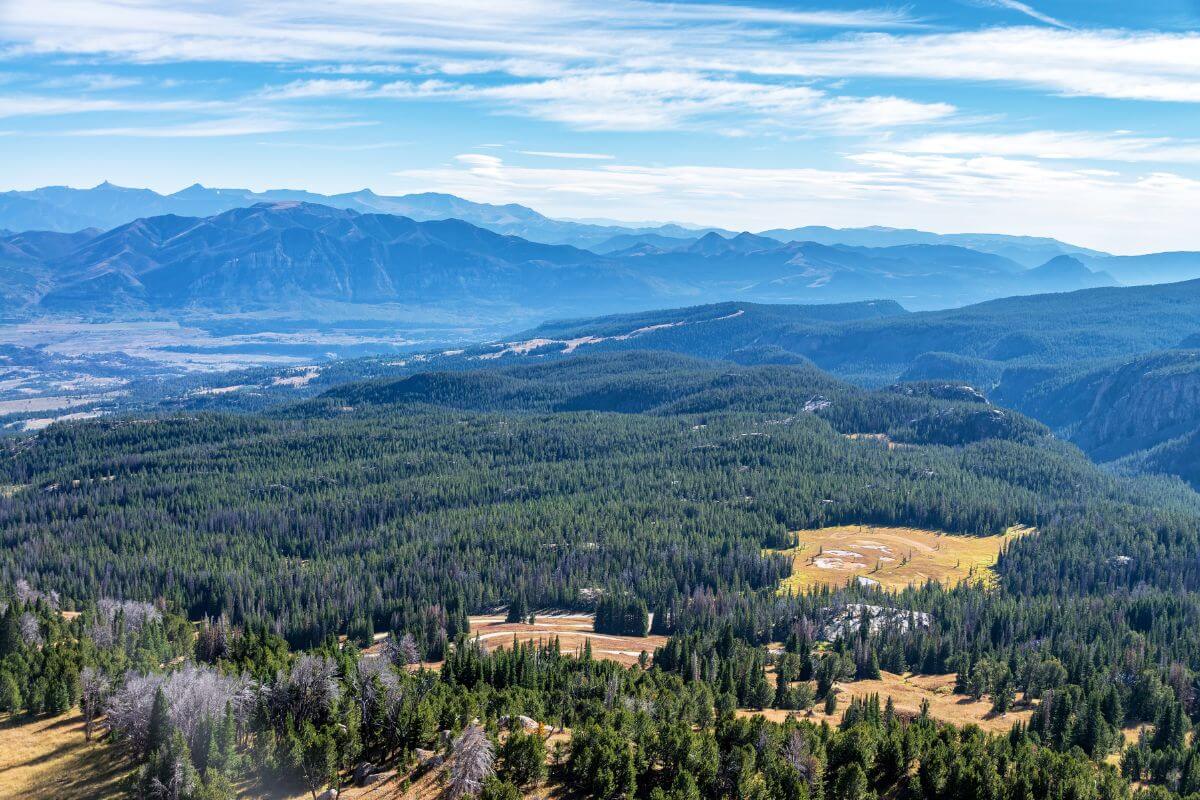
In 1939, a captivating moment in Montana’s history unfolded when ranchers and farmers in Wyoming boldly opposed the federal government and the New Deal.
They dared to dream of a new state called “Absaroka”, named after a local mountain range spanning southeastern Montana, southwestern South Dakota, and northern Wyoming.
Although the movement failed to gain the necessary support or momentum to become a reality, it left a lasting imprint on the collective memory of the region.
The symbol of Absaroka lives on today, with a few license plates produced as a reminder of this audacious quest for independence.
Montana’s close call to having a different history reminds us of the passionate spirit that has always characterized the people of this remarkable state.
8. Montana’s Big Sky Resort

Nestled amid the stunning landscapes of Big Sky, you’ll discover a paradise for winter sports enthusiasts.
Big Sky Resort in Montana stands as one of the largest ski areas in the United States, offering more than 5,000 skiable acres and endless opportunities for thrill-seekers to carve through pristine snow.
It boasts a versatility that sets it apart from other winter destinations. Beyond the slopes, visitors can embark on an unforgettable journey by taking the Lone Peak Tram.
Ascending to over 11,000 feet, this tram offers panoramic views that reach beyond Montana, revealing nearby states and glimpses of iconic National Parks.
After a day of invigorating outdoor activities at Big Sky Resort, unwind and rejuvenate at their spa with indulgent massages and soothing soaks to melt away any fatigue from a day well spent.
To top off your perfect day, enjoy a delicious meal at one of the onsite restaurants, featuring the state’s local flavors in delectable dishes crafted from local ingredients.
The resort offers limitless adventures and awe-inspiring experiences amid Montana’s natural wonders.
9. Montana’s Glacier National Park
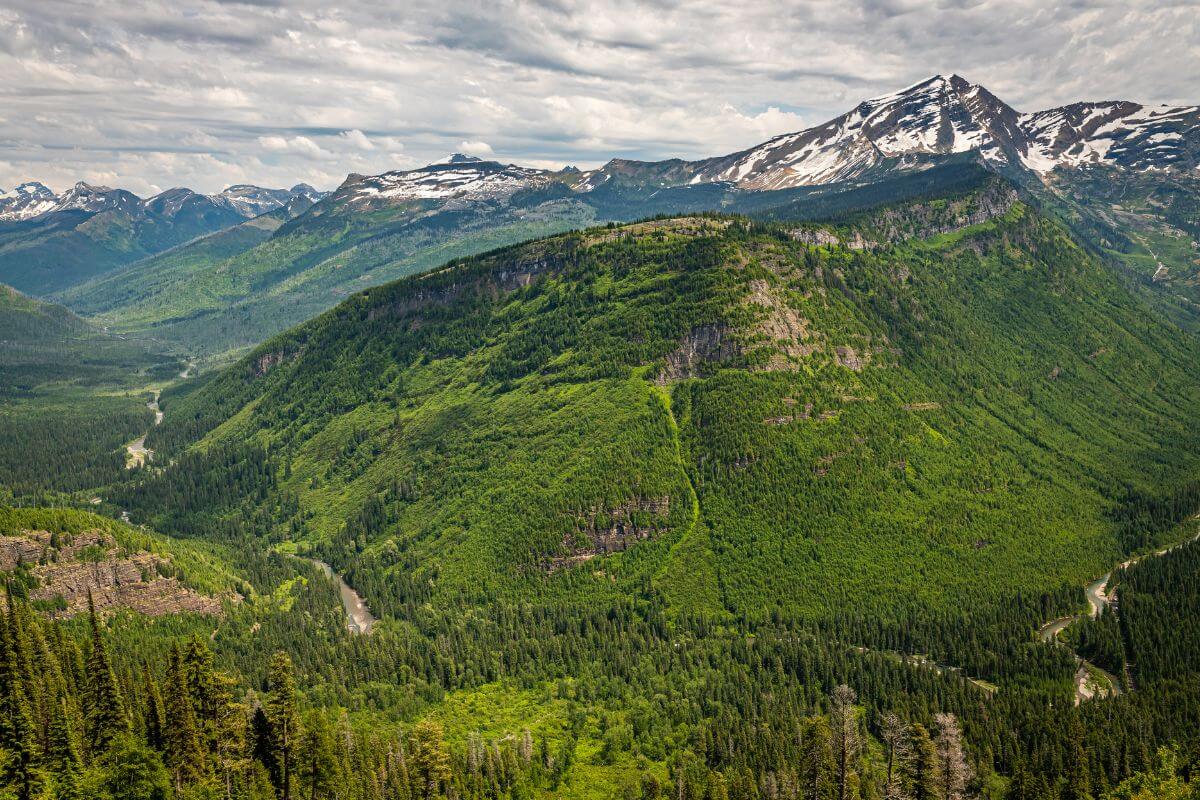
Glacier National Park, spanning over a million acres of majestic natural landscapes, is a true wonder that sets Montana apart.
It’s not just about hiking and camping; the possibilities here are endless.
Imagine immersing yourself in the “Crown Jewel of the Continent,” with its magnificent mountain peaks and expansive forests of pine and fir trees.
One way to soak up this beauty is by taking a historic boat tour on one of the glacial lakes, an experience you won’t soon forget.
Beyond that, the park offers a plethora of hiking opportunities, from short jaunts to full-day adventures.
As you explore these trails, you’ll have the chance to encounter an abundance of wildlife in their natural habitat.
For those embarking on an unforgettable road trip through Montana’s Glacier National Park, be sure not to miss the iconic Going-to-the-Sun Road.
Stretching 50 miles, this scenic route offers unmatched views of St. Mary Lake and the iconic Rising Sun peaks, two of the park’s most photographed sights.
Glacier National Park truly embodies Montana’s natural beauty, inviting you to explore its unique mountainous wonderland.
10. Montana’s Yellowstone National Park
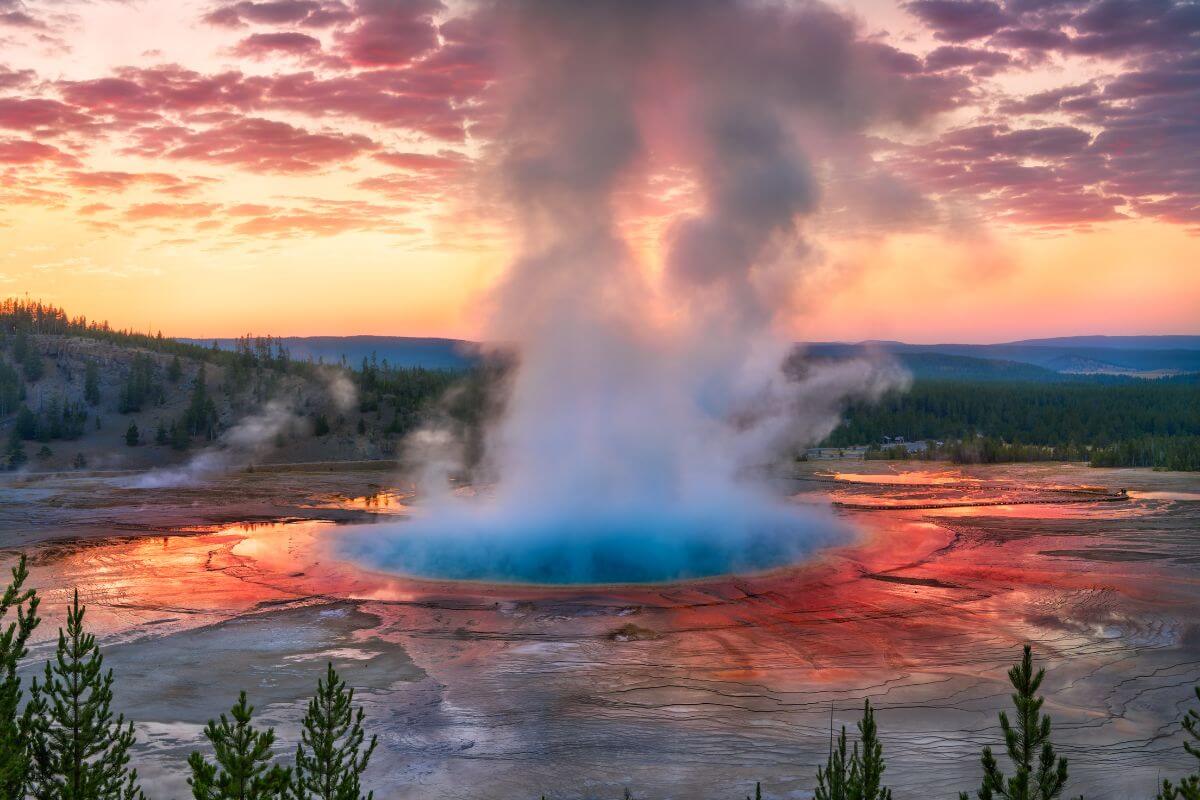
Yellowstone National Park is another example of Montana’s unique natural treasures.
Established in 1872 as the United States’ inaugural national park, its primary mission is to safeguard and preserve its natural and cultural marvels for current and future generations.
But Yellowstone is not just any national park; it is the core of the Greater Yellowstone Ecosystem, one of the last and largest nearly untouched natural ecosystems on our planet.
Within the park’s vast 2.2 million acres, you’ll find the most active, diverse, and intact collection of combined geothermal features.
With over 10,000 hydrothermal sites and half of the world’s active geysers, Yellowstone truly stands out.
In addition to its geological marvels, Yellowstone National Park holds significant cultural and historical importance, boasting 25 sites, landmarks, and districts listed on the National Register of Historic Places.
In this park, you’ll encounter a world unlike any other, so pack your bags and get ready to be amazed by the wonders that await.
11. Bozeman, Montana
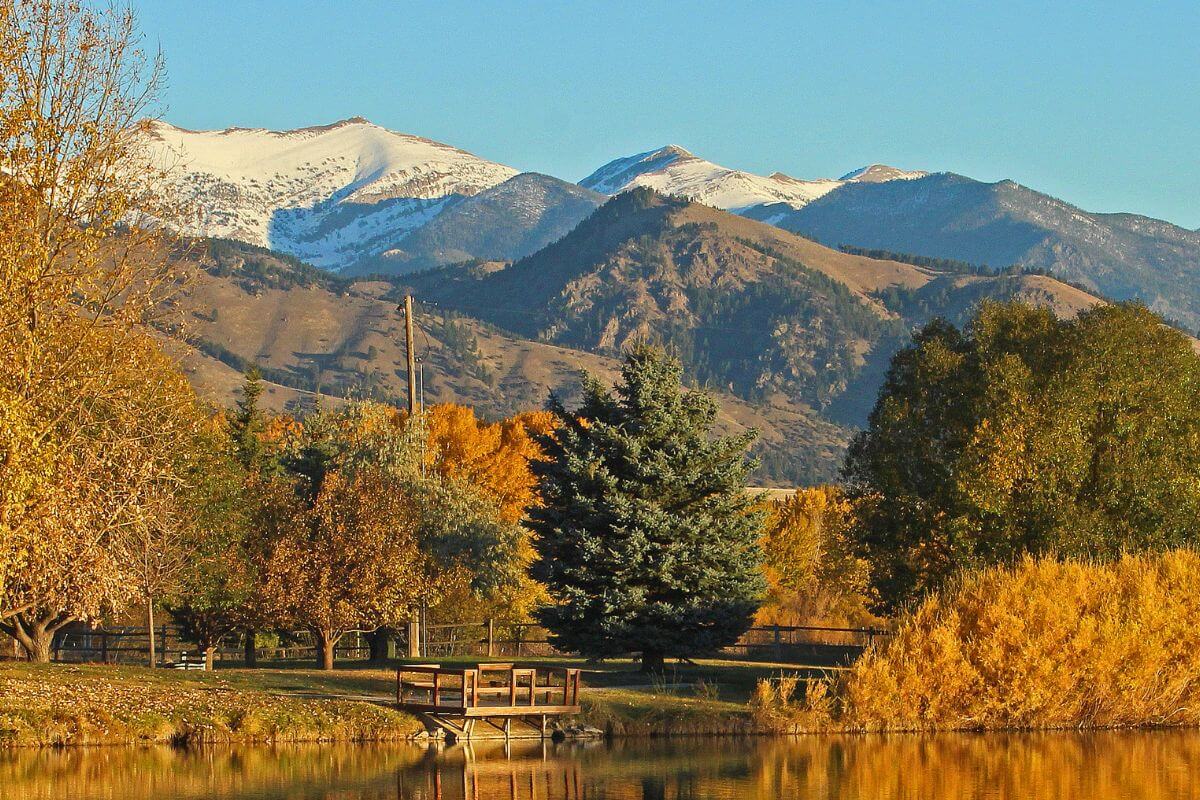
Bozeman, Montana is nestled in the picturesque Gallatin Valley, surrounded by majestic mountain ranges and endless natural beauty.
With a population of 56,123 people as of 2022, this vibrant city offers a unique blend of outdoor attractions and urban amenities.
Bozeman boasts a vibrant arts scene, featuring talented artists in its art galleries. Explore its charming downtown, where a variety of treasures await in delightful shops.
The city offers a diverse dining scene to satisfy all tastes, from delectable sushi to mouthwatering pizza found in its numerous restaurants.
It is also home to a number of microbreweries, each offering a unique selection of handcrafted beers.
From the classic brews of Bozeman Brewing Company to the innovative flavors at Mountains Walking Brewery and MAP Brewing Company, beer enthusiasts are spoiled for choice.
Just a short drive away, this destination serves as the perfect base camp for outdoor enthusiasts. Hit the slopes at Bridger Bowl Ski Area, where world-class skiing and stunning mountain views await.
Saddle up and embark on a thrilling horseback ride through the scenic landscapes of Silver Brand Ranch.
And don’t miss the opportunity to learn about grizzly bears up close at the Montana Grizzly Encounter.
Bozeman also serves as a gateway to the magnificent Yellowstone National Park, where nature’s grandeur awaits in all its glory.
Whether you’re seeking adventure or simply looking to soak in the beauty of the natural world, this bustling city is sure to leave you captivated.
12. West Yellowstone, Montana
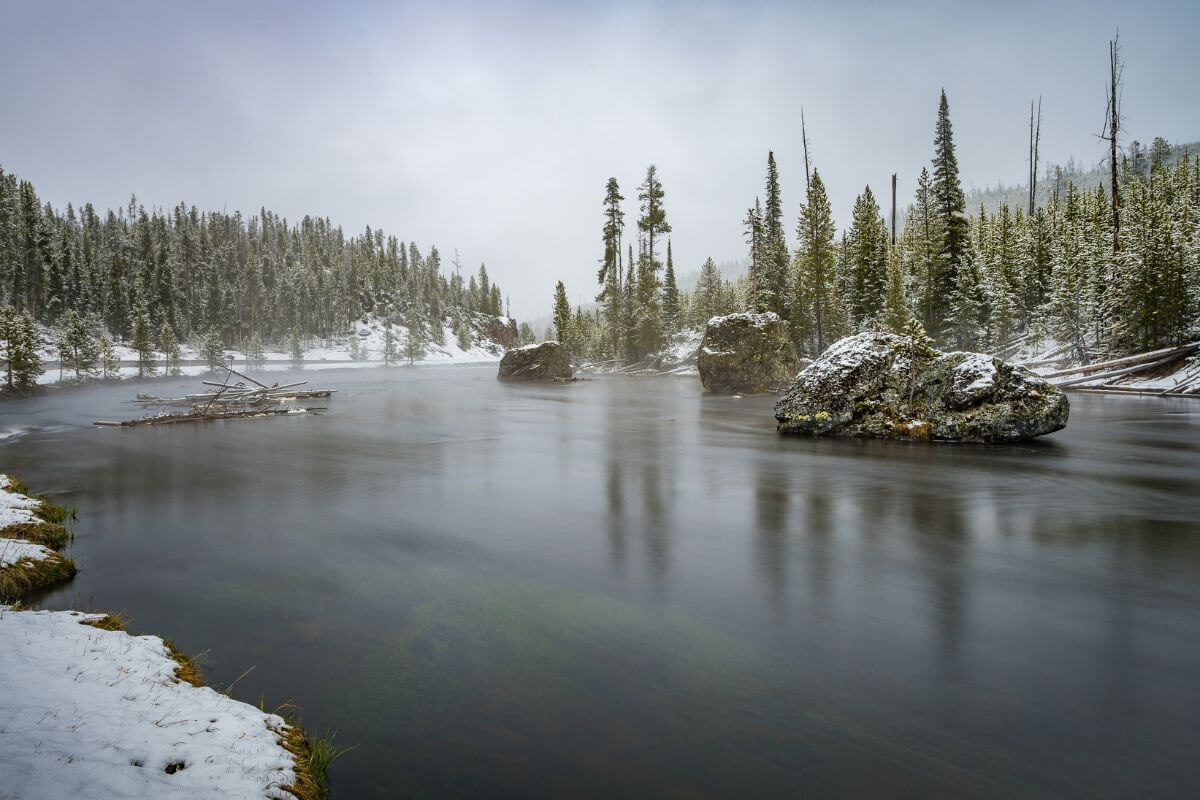
With its breathtaking scenery and a wide range of activities, West Yellowstone, Montana is a year-round destination for adventure seekers and nature enthusiasts.
It’s a gateway to Yellowstone National Park and, in winter, transforms into a snowy wonderland for thrilling snowmobiling amid picturesque frozen landscapes.
So don’t forget your camera!
Apart from its winter charm, experience the wonder of new life in spring as you observe newborn animals exploring their environment.
Summer in West Yellowstone offers endless opportunities for outdoor enthusiasts.
Lace up your hiking boots and explore the park’s miles of trails, or bike through stunning landscapes that will leave you breathless.
Immerse yourself in Montana’s local culture by catching thrilling rodeos, enjoying live music, and visiting the Yellowstone Museum, where you can explore the region’s rich history.
No matter the season, the place ensures a range of adventurous options to suit every interest.
Embrace your wild side with white water rafting on the exhilarating rivers, or saddle up for a horseback riding expedition through the park’s scenic vistas.
For a truly unforgettable experience, take to the skies with a helicopter tour, offering a bird’s-eye view of this majestic wilderness.
West Yellowstone, Montana, invites you to step into a world of natural wonder and thrilling escapades.
Don’t miss your chance to explore this captivating destination at the doorstep of Yellowstone National Park.
13. Montana’s Museum of the Rockies
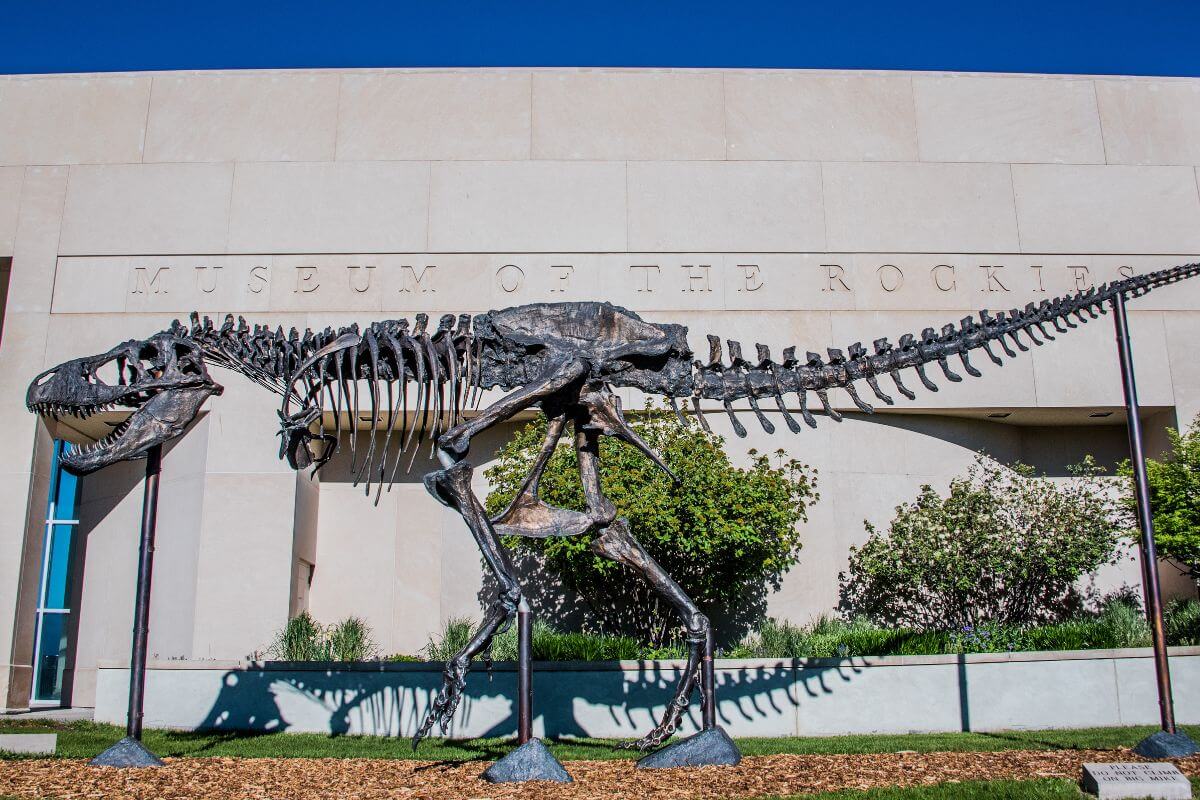
Montana’s Museum of the Rockies is home to the largest North American dinosaur collection in the United States.
Stepping into this incredible museum is like stepping back in time.
One of the most thrilling exhibits is the legendary “Big Mike,” the state’s first Tyrannosaurus Rex discovery.
Beyond prehistoric creatures, the museum offers a whole range of interactive events and activities suitable for both kids and adults.
Dive into the cosmos at the Taylor Planetarium, where a mesmerizing presentation of light, color, and motion vividly animates the universe.
It’s an experience that will leave you feeling humbled by the vastness of the universe.
Nestled in the breathtaking backdrop of the Rocky Mountains, the Museum of the Rockies is a must-visit destination for anyone with a fascination for the world’s ancient past.
14. Montana’s Little Bighorn Battlefield National Monument

Montana’s Little Bighorn Battlefield National Monument stands as a testament to one of the most important moments in American history.
This sacred memorial holds deep significance for the Sioux, Cheyenne, and Arapaho Native Americans who fought against General Custer and his troops in 1876.
To fully grasp the site’s historical significance, begin your journey at the visitor center.
There, immerse yourself in the battle’s stories and context through an orientation video that prepares you for what lies ahead.
For a more enriching experience, attending a Park Ranger talk is a must.
Whether you choose a self-guided or guided tour, exploring the park’s 765 acres is an awe-inspiring experience.
During your visit, make sure to pause at significant locations like Deep Ravine, where markers pay tribute to the resting places of Native Americans and U.S. troops.
Montana’s Little Bighorn Battlefield National Monument is more than a destination; it’s a powerful expression of the state’s resilience, bravery, and history.
15. Montana’s Lewis and Clark Caverns State Park
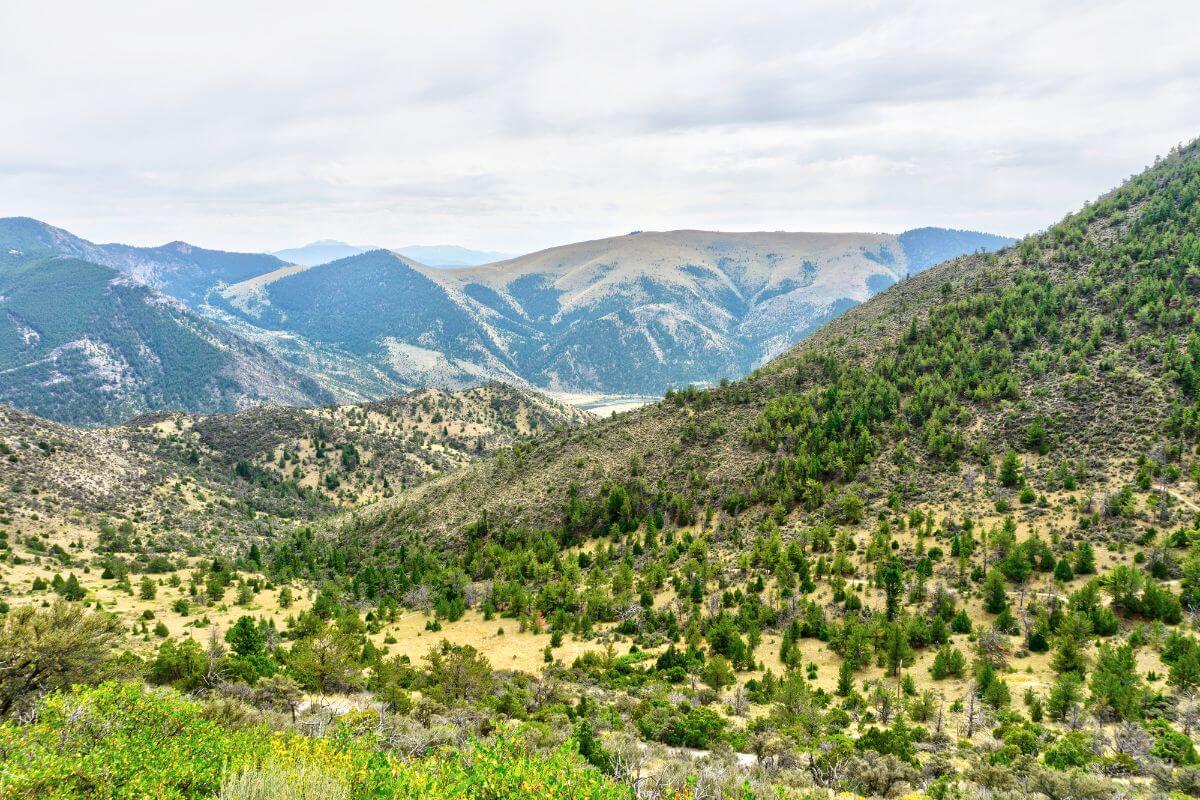
Montana’s Lewis and Clark Caverns State Park, the oldest park in the state, features one of the most intricate and breathtaking caves in the U.S., contributing to Montana’s uniqueness.
Guided tours, available from May to September, offer a fascinating glimpse into the intricate formations and geological wonders that lie beneath the earth’s surface.
But awe-inspiring caves are just the beginning. The park is also a haven for outdoor enthusiasts of all levels.
Whether you’re a beginner or an experienced explorer, the site has something for you.
After a day of exploration, visitors can relax and enjoy a picnic lunch or a meal at the cafe. For an extended stay, camping options are available at the campground.
Explore Montana’s Lewis and Clark Caverns State Park further at its state-of-the-art visitor centers, offering insights into the park’s history and geology.
Another option is to take to the waters and enjoy canoeing or fishing on the nearby Jefferson River.
For a truly unique and enchanting experience, this historically and ecologically abundant park is the perfect destination.
16. Montana’s Garden of a Thousand Buddhas
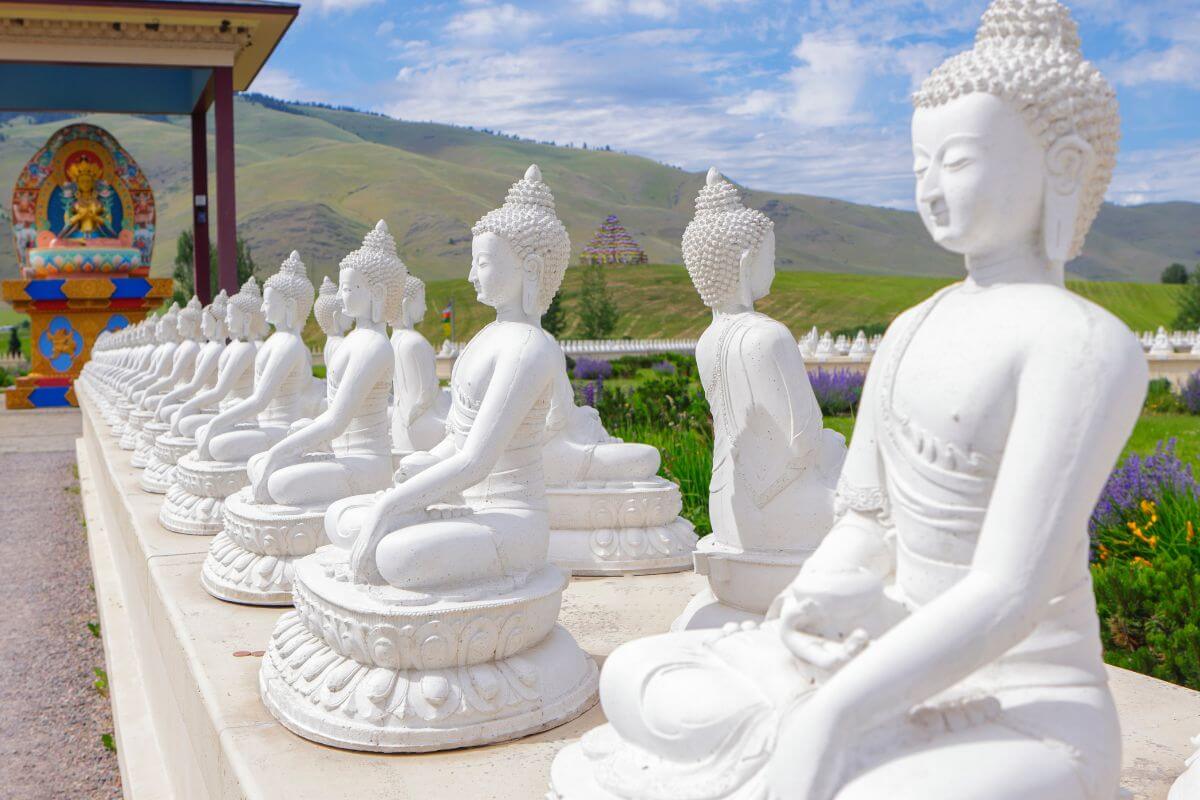
Nestled in Montana’s heartland is a place of profound spiritual significance.
Montana’s Garden of a Thousand Buddhas boasts breathtaking features, including 1,000 locally crafted Buddhist statues adorning the dharma wheel’s eight spokes.
At its center stands a magnificent sculpture of the Buddhist goddess Tara, radiating grace and compassion.
This sacred garden exudes an ambiance of serenity, inviting visitors to find solace and inner peace.
What makes this sanctuary truly exceptional is its role as an International Peace Center.
Open and free to the public, it warmly welcomes people from all walks of life, regardless of their religious or spiritual beliefs.
It serves as a testament to the power of unity and understanding in a diverse world.
The Garden of a Thousand Buddhas isn’t merely a physical space; it’s a spiritual journey that contributes to Big Sky Country’s uniqueness.
17. Montana’s Bannack State Park
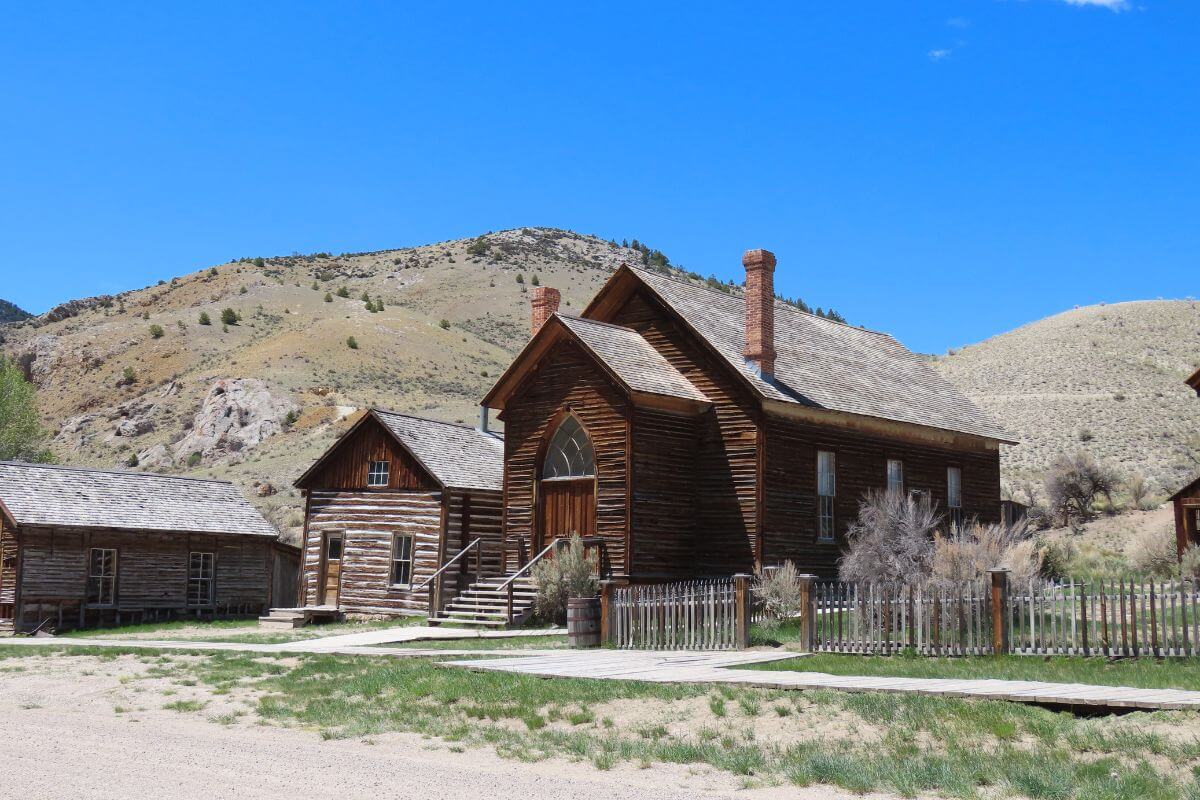
There’s a place in Montana that holds remnants of a bygone era.
Bannack, an 1862 mining town in Beaverhead County, was abandoned in the 1970s, giving rise to the hauntingly beautiful Bannack State Park.
A place where time stands still, it boasts around 60 authentic buildings, transporting visitors back to the days of the Wild West.
You feel a sense of awe and reverence for the pioneers who built this town from the ground up.
Bannack State Park preserves their legacy, allowing visitors to connect with a piece of American history that feels both raw and authentic.
Bannack State Park is a captivating reminder of the resilience, determination, and spirit of those who shaped Montana’s past.
18. Montana’s Historical Society Museum

Montana’s Historical Society Museum, also known as Montana’s Museum, is a dream destination for Wild West history enthusiasts.
Located near Montana’s state capital, Helena, this museum is a treasure trove of artifacts and stories that bring the American West to life.
From archaeological and ethnological artifacts that narrate the story of Montana’s original inhabitants to fine art showcasing scenes from the state, there’s something to engage every history lover.
The museum also houses a remarkable assortment of historically significant items from the area’s earliest settlers.
For those interested in Native American and state history, a visit to Montana’s Museum is invaluable. The wealth of resources and knowledge contained within its walls is truly remarkable.
19. Garnet, Montana
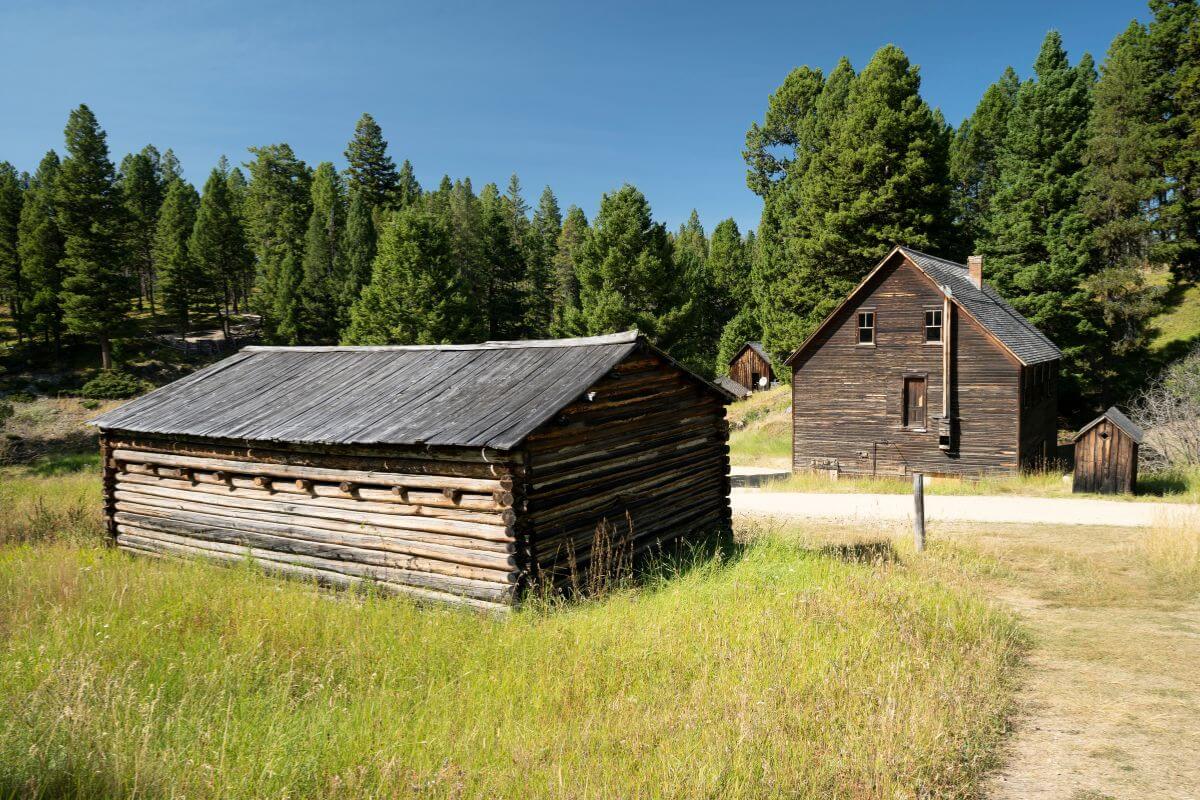
Garnet is a remarkably preserved ghost town where you can step back into the Gold Rush Era and feel the echoes of a bygone time.
Exploring Garnet’s deserted buildings is a unique and immersive journey, where the spirit of the Old West comes alive in this frozen-in-time town.
But it’s not just the town itself that captivates. The peaceful wilderness that surrounds Garnet provides a serene backdrop to this historical gem.
As you admire the rolling hills and beautiful mountains, a deep connection to the land and its past inhabitants envelops you.
It’s a reminder of the resilience and spirit that defined the pioneers of the Old West.
Garnet, Montana, is where time stands still, breathing life into history and offering a window into the state’s unique past.
20. Montana’s World Museum of Mining
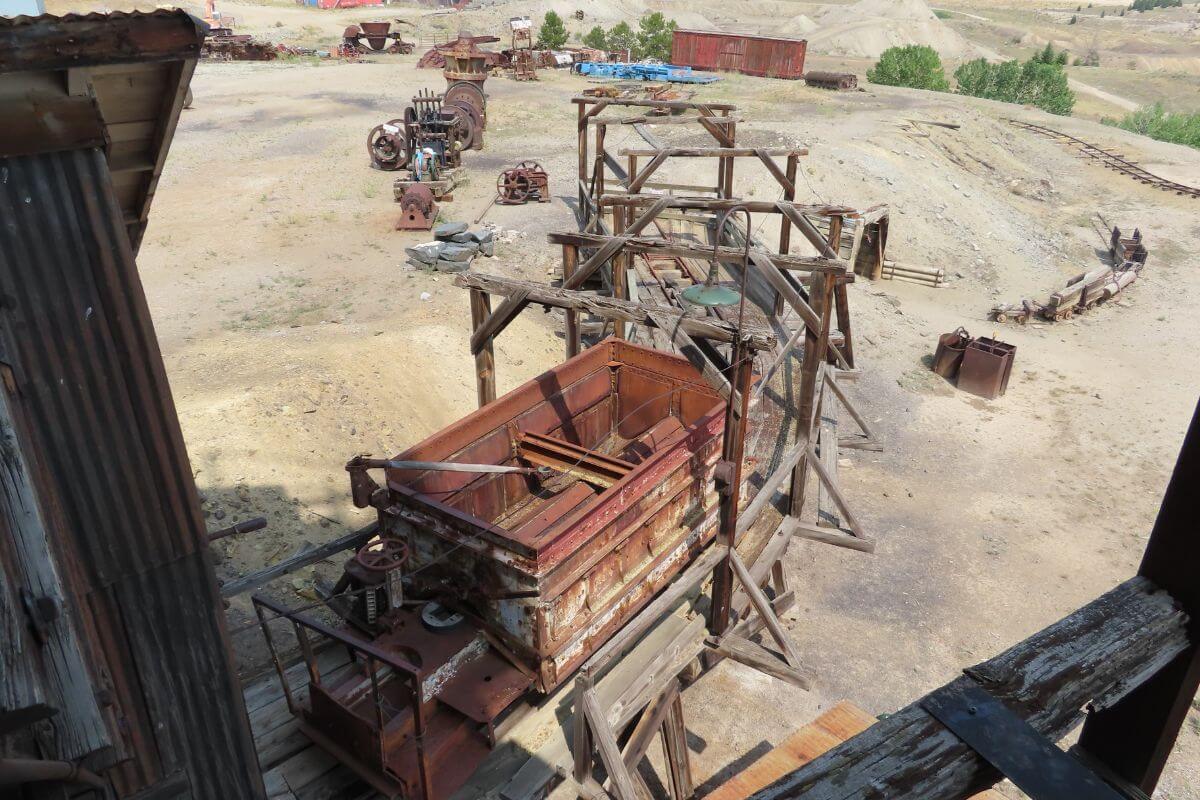
Travel south from Helena to reach Butte, where you’ll discover this magnificent historic destination.
In the heart of southwest Montana, the World Museum of Mining offers a captivating glimpse into the region’s copper mining heritage.
Upon entering the museum grounds, you’ll be struck with awe as you encounter 50 exhibit buildings, each housing a treasure trove of artifacts that narrate the tale of Butte’s mining industry.
But what truly sets this museum apart is the opportunity to go beyond the surface, quite literally.
For an additional fee, visitors can experience an underground tour of a decommissioned mine.
Descending into the earth with a knowledgeable miner as your guide, you can’t help but be transported back in time.
The dimly lit tunnels and echoing tales from the past vividly portray the daily challenges and victories of Butte’s miners.
With each step, you develop a deeper appreciation for the grit and determination that drove the industry and shaped the core of Butte’s history.
21. Montana’s Grizzly and Wolf Discovery Center

In West Yellowstone, you’ll find the Grizzly and Wolf Discovery Center, a unique sanctuary where visitors can intimately experience the region’s majestic creatures.
Home to grizzly bears and wolves, it harbors a hidden realm where wildlife rules supreme.
This place truly defies the boundaries of time and season. Open year-round, the Center allows visitors to experience the wonders of the animal kingdom in any season.
The Center’s diverse resident animals only add to its allure.
Featuring 6 grizzly bears, 5 wolves, recently added river otters, and fearsome raptors, the playful family of river otters is a delightful new addition for visitors.
Not only are there incredible animals to admire, but the Center also offers a variety of talks and tours.
From educational presentations on the behavior and conservation of grizzly bears and wolves to unique behind-the-scenes experiences, there’s something for everyone to participate in and learn from.
Montana’s Grizzly and Wolf Discovery Center features a standout new exhibit highlighting riparian environments.
Complete with interactive aquariums, playful otters, and simulated wetland settings, this addition offers an engaging educational experience.
22. Montana’s Lake McDonald

Lake McDonald in Montana, nestled within Glacier National Park, is not only captivating but also holds the distinction of being the largest lake in the park.
The majestic Rocky Mountains mirror their splendor on the tranquil lake’s surface, crafting a mesmerizing and picture-perfect scene.
With its picturesque setting, this lake is a paradise for nature enthusiasts and photographers alike.
Every angle offers a new perspective, allowing you to capture the essence of the state’s famous mountain ranges in all their glory.
Exploring Lake McDonald is an absolute must-do when visiting Montana’s Glacier National Park. Take a scenic boat cruise, letting the gentle waves carry you along as you soak in the awe-inspiring vistas.
For those seeking an immersive experience, staying at the historic Lake McDonald Lodge is highly recommended.
From here, you can embark on exhilarating hikes, immersing yourself in the park’s pristine wilderness.
Whether you’re an experienced hiker or prefer a leisurely walk, the trails encircling Lake McDonald cater to all, revealing the diverse beauty of this natural wonder.
23. Montana’s Ptarmigan Tunnel

Montana’s Glacier National Park features the captivating Ptarmigan Tunnel within its breathtaking landscape.
This angular passage, carved directly through a mountainside, creates a one-of-a-kind hiking experience that is both thrilling and mesmerizing.
What truly sets Montana’s Ptarmigan Tunnel apart is the seamless integration of human ingenuity with nature’s grandeur.
This remarkable feat, carved by man through the heart of the mountains, serves as a testament to the unique charm of this hiking destination.
It reminds us of our ability to connect with and appreciate the raw beauty that surrounds us.
For all those who seek adventure and a deeper connection with nature, this tunnel is a must-visit.
What Makes Montana Unique Final Thoughts

Montana’s uniqueness is deeply intertwined with its natural beauty.
The state boasts some of the most iconic national parks in the United States, with Glacier and Yellowstone taking center stage.
However, its distinctiveness extends well beyond its natural splendor, encompassing its cultural sites, wildlife, towns, and cities.
From grizzly bears to cultural sites like the Museum of the Rockies, and charming towns and cities such as Bozeman and Helena, the state offers a variety of one-of-a-kind experiences.
Ultimately, to fully embrace Montana’s uniqueness, you must immerse yourself in its nature, history, and vibrant communities.
What Makes Montana Unique FAQs
1. What Is Unique in Montana?
What truly sets Montana apart is its remarkable feature known as the Triple Divide. The state boasts one of only 3 triple divides in North America.
At Triple Divide Peak, water flows to 3 bodies of water, reaching the Arctic Ocean through Hudson Bay, the Atlantic Ocean through the Gulf of Mexico, and the Pacific Ocean.
2. What Makes Montana Different From Other States?
Mention that Montana holds the honor of being home to Glacier National Park, which combines with Waterton Lakes National Park in Canada to form the world’s first “international peace park.”
This unique designation sets Montana apart, as the combined site encompasses breathtaking snowcapped mountains, high-altitude lakes, and rivers cascading from glaciers.
3. What Food Is Montana Famous For?
Montana is famous for its huckleberries, a wild fruit that grows abundantly in the state. These small, purple berries have a sweet and tangy flavor, making them a popular ingredient in pies, jams, and desserts.
In addition to their delicious taste, huckleberries also have a rich history and cultural significance to Native American tribes in Montana.
4. What Is Beautiful About Montana?
From the iconic Yellowstone National Park with its geysers and wildlife to the majestic Rocky Mountains and the pristine glaciers of Glacier National Park, Montana’s beauty is primarily found in its natural splendor.
But beauty isn’t confined to its wilderness; it also resides in its charming towns and cities like Bozeman and Helena.
5. What Is Montana Known As?
Montana is known by two popular nicknames: “Big Sky Country” and “The Treasure State.”
The 1st is a nod to its expansive landscapes and vast skies that seem to stretch endlessly to the horizon.
The 2nd nickname reflects the state’s rich mining history, as its mountains were once a treasure trove of gold and silver deposits in the 1800s.
Dive into the pages of these extraordinary reads to uncover Montana’s hidden treasures:
- Montana’s Best Attributes
- Montana’s Renowned Qualities
- Montana Is a Great State
- Montana’s Famous Sayings
- https://www.nps.gov/glac/index.htm
- https://www.nps.gov/yell/index.htm
- https://www.nps.gov/articles/000/waterton-glacier-international-peace-park-world-heritage-site.htm
- https://fieldguide.mt.gov/speciesDetail.aspx?elcode=AMAJB01020
- https://fieldguide.mt.gov/speciesDetail.aspx?elcode=PDERI180K0
- https://www.nasa.gov/multimedia/imagegallery/image_feature_697.html
- https://www.nps.gov/libi/index.htm
- https://epod.usra.edu/blog/2003/01/triple-divide-peak-montana.html
- https://www.nps.gov/glac/planyourvisit/lakemcdonald.htm
- https://www.flickr.com/photos/fritzmb/5990984848
- https://www.flickr.com/photos/mytravelphotos/2148330998
- https://www.flickr.com/photos/greaterfalls/5969972501
- https://www.flickr.com/photos/time-to-look/48811739588
- https://www.flickr.com/photos/auvet/14691996574
- https://www.flickr.com/photos/davidwilson1949/51880900035

